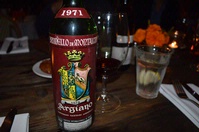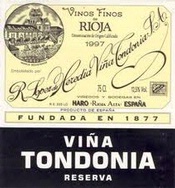
I was invited on a recent Saturday night to join my friend and colleague Jeremy Parzen for dinner at a wine savvy local restaurant. Jeremy, a native Californian who is fluent in Italian, writes the closely watched Do Bianchi wine blog. The focus, as you might imagine, is on the wines of Italy.
We would be joined on this evening by winemaker Paolo Cantele, one of the young lions of the wine industry in the Puglia region of southern Italy. Everyone would bring some wine to share, as is the custom. And our small group grew as the evening wore on and the wine flowed.
I confess I was a bit nervous about my contribution, apologizing in advance should the wine I chose be over the hill. You may have heard that wine improves with age. That’s not always the case, and even when it is, there comes a time when any wine is completely shot, devoid of flavor and past the point of redemption.
I hoped for the best but feared the worst as we pulled the cork on my bottle of 1971 Argiano Brunello di Montalcino. When this wine was made, the producer was barely known outside the boundaries of Tuscany. The only Brunello producer of world renown was Biondi Santi. And there was serious doubt that many of the rustic wines of the era would improve over time.
 As the cork came out intact (at 42 years on, it would not have been a surprise if the cork had crumbled) there was a sigh of relief around the table. The cork was in excellent condition, always a good sign after four decades in the cellar.
As the cork came out intact (at 42 years on, it would not have been a surprise if the cork had crumbled) there was a sigh of relief around the table. The cork was in excellent condition, always a good sign after four decades in the cellar.
The first glass was poured and all around we marveled at the bright color, for red wines tend to lose color and brown around the edges with significant age. Based upon the visual inspection, the wine appeared to be very much alive.
After a few quick swirls for aeration came the smell test. There were no off aromas. With a bit of air and a little time, it began to exhibit aromas of tart cherry and nuances such as leather and spice. So far so good.
Finally, the taste test. Despite its age, the Brunello had structure and tannic grip, with complex savory elements on the palate and ever more intense fruit as it got more air. I did a little fist pump. The wine was that good.
Not to be outdone, someone produced a bottle of 2001 R. Lopez Heredia “Vina Tondonia” Rioja Reserva; only 12 years old but a wine of legendary longevity. At my favorite wine shop, this is the vintage of Vina Tondonia Reserva that is currently available.
You would think this Rioja would show some signs of age: loss of color, taming of its fruit profile, soft tannins. Instead, the color was brilliant. On the palate the wine was remarkably fresh. The structure was bold and firm.
It took me back to a recent time when I ordered a 1970 Vina Tondonia Reserva from the wine list at another restaurant. It was decanted and brought to the table, and my guests at dinner were convinced it was a “young” wine.
Older wines are not for everyone, and they may not be for you. They evolve over the years and the flavors change. Most wines sold today are consumed within days, if not hours, of purchase. You get a blast of fruit and a blast of alcohol and that’s just fine for most people. Nothing wrong with that.
But if you are at all curious about profound wines for the ages and can’t afford the high price of Bordeaux or Burgundy, you could do worse than explore the possibilities presented by top-notch Brunello di Montalcino and Rioja Reserva.
Then you too might be inclined to add a little fist pump to your wine tasting experience.
8
